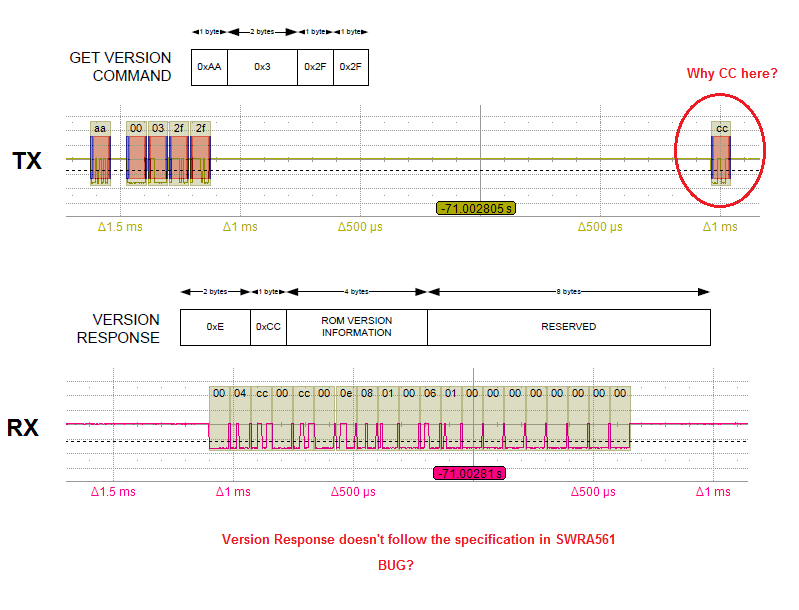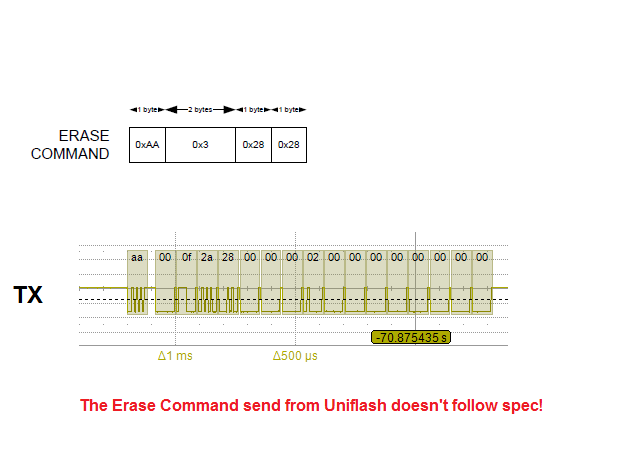Other Parts Discussed in Thread: UNIFLASH, IWR1642
Hello,
We plan to add features for reprogramming the IWR1443 flash from the system host processor. That is, we will send the MSS and BSS images from the host processor via UART to IWR1443 bootloader.
For the implementation in the host processor we need details about the UART protocol that the bootloader uses. I have found an application report "SWRA561", but there are some details (quite a lot actually) missing.
1. How is the checksum (4th byte) calculated in the commands (page 12 in SWRA561)?
2. Should the image according to the format in Chapter 2.1 be sent to the bootloader?
3. Should you use the "Image Creator" tool to create the image?
4. How is the image split into "WRITE TO FLASH" messages?
5. What byte order should be used when transfering the words in the image?
6. Are there any timing requirements you need to know about?
7. How do you interpret the STATUS word in "STATUS RESPONSE"
Are these other protocol details documented somewhere?
//Haakan



